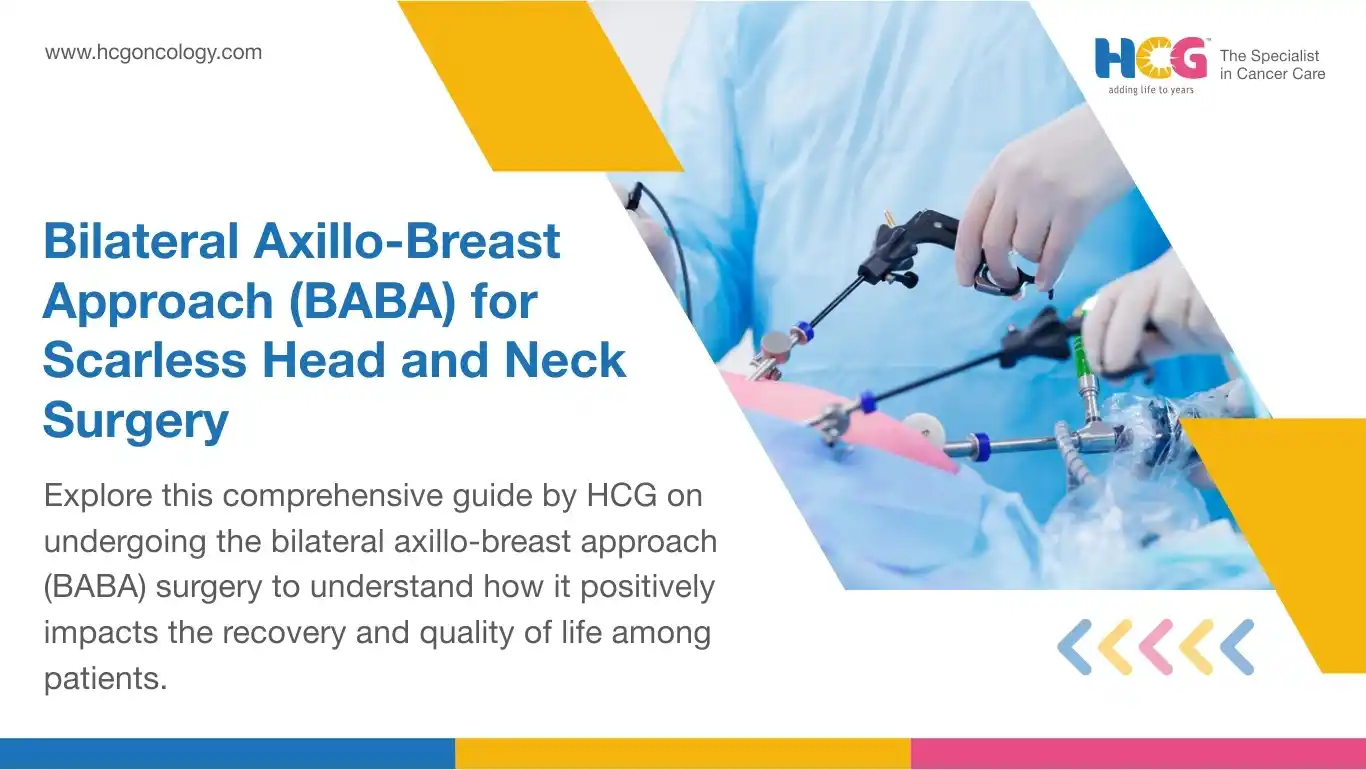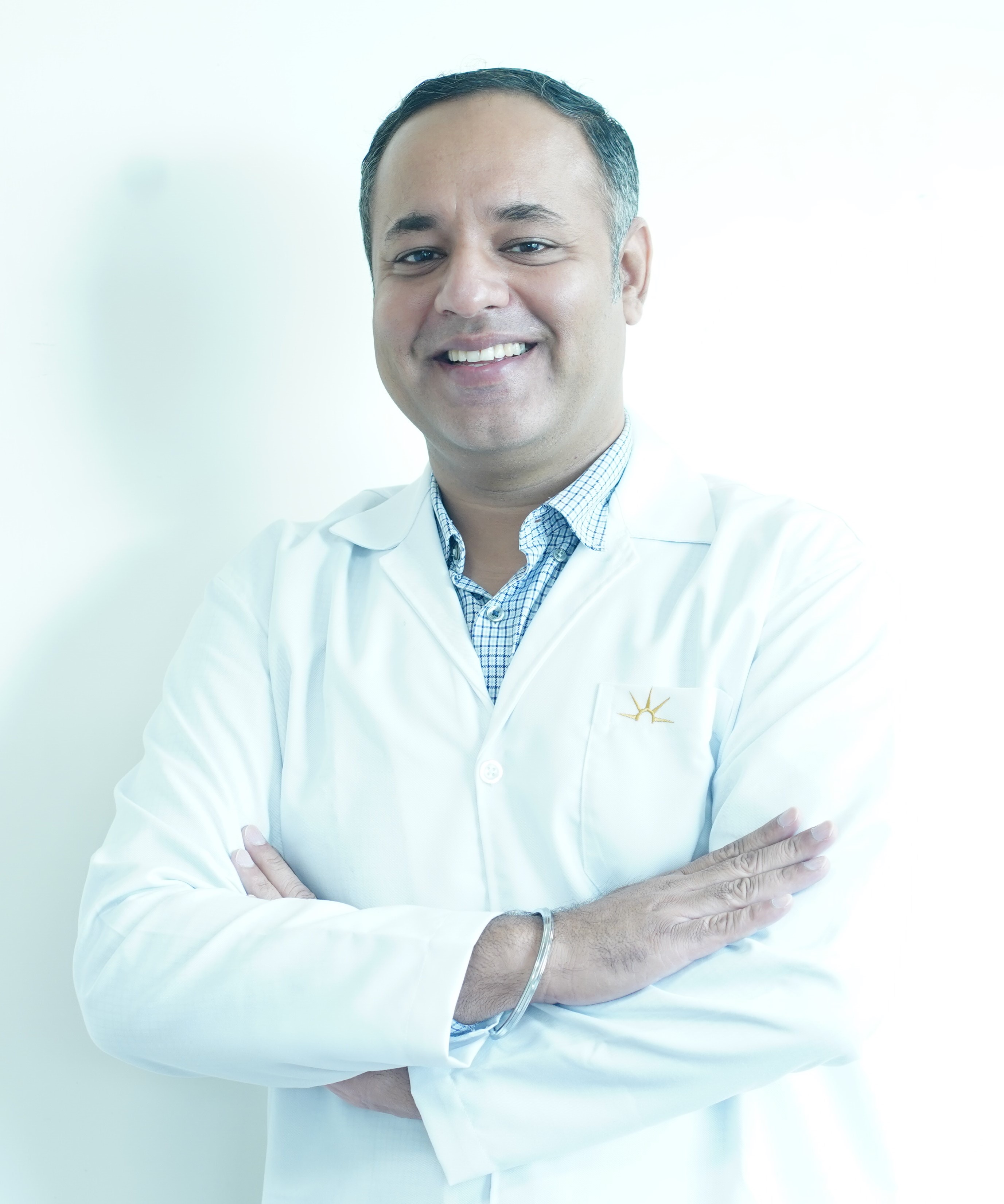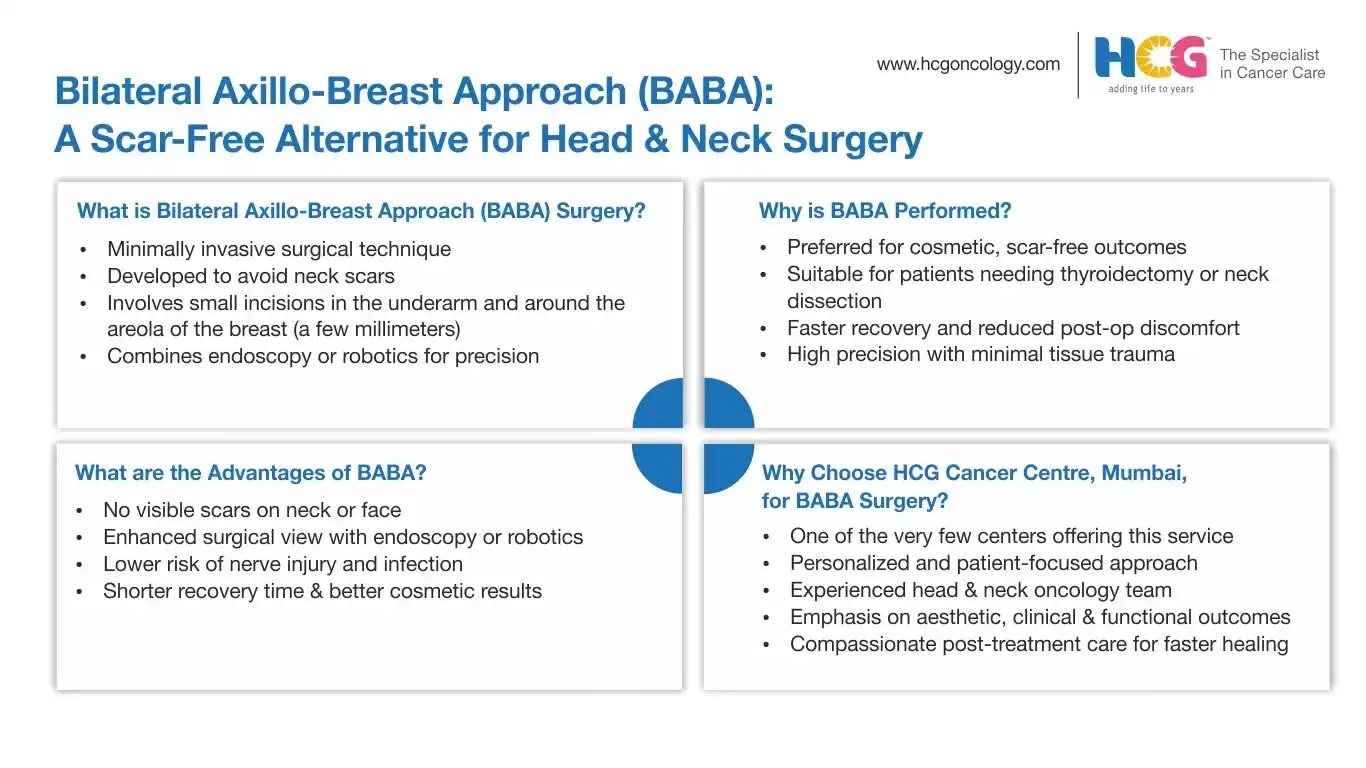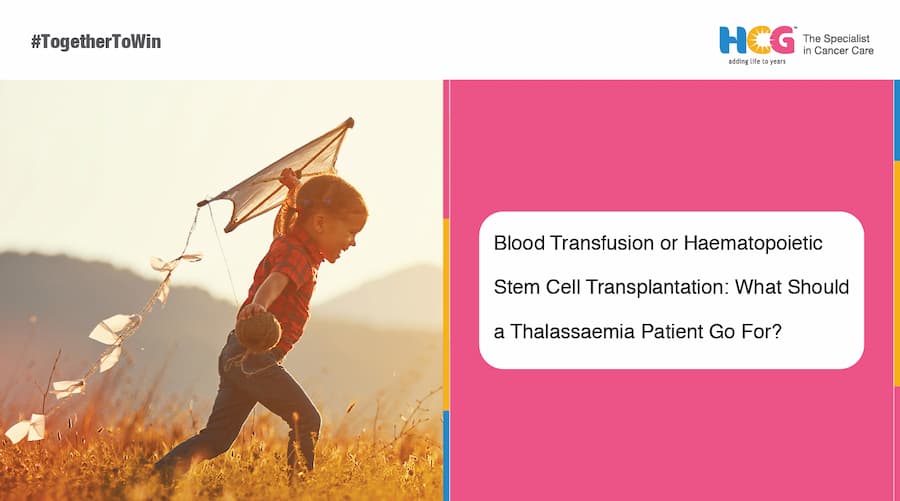
22 Dec, 2025
Feel free to reach out to us.

22 Dec, 2025

This article is medically reviewed by Dr. Yash Mathur, Consultant - Head and Neck Oncosurgery and Robotic Surgery, HCG Cancer Centre, Borivali.

The Bilateral Axillo-Breast Approach (BABA) was developed in 2007.
It is an effective surgical approach used for extracervical endoscopic thyroidectomy globally. However, its most important use is for MRnd (Modified radical Neck Dissection), which was first developed in 2017.
The technique was designed to eliminate neck scars, thereby addressing the cosmetic concerns associated with conventional neck dissection surgery.
Since the first endoscopic parathyroidectomy was done in 1996, the two models for endoscopic thyroidectomy have evolved.
The other model is related to eliminating neck scars. The techniques under this model include extracervical approaches such as transaxillary, axilla-breast, bilateral breast, and anterior chest techniques. Of these, bilateral axillo-breast surgery is not widely used due to a lack of trained expert surgeons.
Known as a top-ranking comprehensive cancer hospital in Mumbai, HCG is one of the few hospitals in the city to use the bilateral axillo-breast approach for head and neck cancer surgeries.
Surgeons primarily perform the bilateral axillo-breast surgery for thyroid gland procedures, such as thyroidectomies and neck dissections. The method is minimally invasive and provides superior cosmetic outcomes by eliminating neck scars.
The procedure involves an incision on the axilla and around the areolae, which is only a few millimeters. Surgeons may have excellent visualization when the BABA surgery is combined with robotics, which ensures minimal trauma and precise dissection.
It is beneficial for patients who are more concerned about the appearance of neck scars. Through its aesthetic and functional benefits, this procedure improves patient satisfaction and promotes a faster recovery.
The surgeon places the patient in the supine position (lying on the back, facing up).
The surgeon inserts the trocars to create an opening. The surgeon reduces the bleeding during surgery by injecting diluted epinephrine solution into the subcutaneous space in the neck and the chest.
The incision on both the upper circumareolar areas is followed by dissection with a vascular tunnel.
The surgeon elevates the working space superiorly till the level of the lower border of the mandible and laterally at the medial border of the trapezius muscle.
The surgeon uses an endoscope in the dizitorium and maintains the working space using CO₂ insufflation.
The neck nodes are removed along with the submandibular gland, and all the nerves are preserved.
The surgeon closes the skin after placing the suction drain cosmetically, which is a few millimeters.
There is a significant difference between bilateral axillo-breast surgery and traditional open head and neck surgery, especially in terms of cosmetic outcome, incision location, surgical technique, and the quality of life achieved by the patient.
| Open Head and Neck Surgery | Bilateral Axillo–Breast Approach |
|---|---|
| Large 3–6 inch incision | Small incisions in the underarm and around the areola of the breast (a few millimeters) |
| Huge scar in the neck region | No scar in the head, neck, and face region |
| Involves manual dissection | Involves robotics and endoscopy for enhanced precision, improved magnification, and easy access to the neck region |
| Recovery time may be longer due to larger incisions, tissue trauma, pain, and possible increased chances of infection. | Recovery is faster because of smaller incisions, less tissue damage, less postoperative pain, and reduced chances of postoperative infection. |
| Patient satisfaction may vary, depending on the postoperative pain, post-surgery complications (if any), and recovery time. | Higher patient satisfaction rates are reported due to reduced discomfort, faster recovery, and fewer complications. |
| The duration of surgery is relatively less. | BABA surgery may take more time than conventional surgery. |
The following are the different advantages of bilateral axillo-breast surgery:
The complications associated with bilateral axillo-breast surgery are the same but fewer compared to conventional open surgery. The following are the risks associated with the BABA surgery:
The cost of bilateral axillo-breast surgery depends on various factors. Some of these factors are:
HCG Cancer Centre, Borivali, Mumbai, is known for its use of modern cancer treatment technologies and innovative approaches that are not only personalized but also patient-focused.
HCG offers facilities for bilateral axillo-breast surgery, performed through robotic techniques. The head and neck oncology surgery team available at the HCG is extensively experienced in performing BABA surgery through robotics, ensuring excellent outcomes. HCG Mumbai is one of the few centers in the region offering Bilateral Axillo-Breast Approach (BABA) surgery for head and neck cancers, performed using cutting-edge robotic techniques.
Through comprehensive oncology services, HCG strives to make cancer care more holistic by offering compassionate post-treatment care that supports faster recovery and improved quality of life.
Additional Reading: Robotic Surgery at HCG in Mumbai
BABA surgery is a type of surgery used for performing various types of neck dissection and thyroid procedures. The surgery is used to manage various benign and cancerous conditions related to oral and oropharyngeal cancers.
The advantages of BABA surgery over conventional surgery are scar-free outcomes, fewer complications, and faster recovery. The complications include bleeding and hematoma, infections, and nerve injury, which are less than with the open approach.
The cost and duration of the BABA technique are relatively higher than those of conventional surgery due to its increased complexity.

Dr. Yash Mathur
Consultant – Surgical Oncology
MDS (OMFS), FHNS (Head & Neck Oncosurgery)
Dr. Yash Mathur is a seasoned head and neck cancer specialist and robotic oncosurgeon with extensive training in the management of advanced oral, oropharyngeal, and salivary gland malignancies. He can be consulted at HCG Cancer Centre, a well-known cancer hospital in Mumbai. He is known for doing transaxillary neck dissection (RABIT). Dr. Yash is skilled at performing minimal-access resections for advanced oral cancers and complex primary surgeries, especially on the tongue, cheek, and lips. Through specialized training, Dr. Yash has acquired a mastery of head and neck surgery and reconstruction for post-surgery oral and craniofacial defects.
Appointment Link: Book an Appointment with Dr. Yash Mathur.
